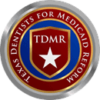Many Americans lack access to basic, affordable oral health care.
Tooth decay is the most preventable unmet health need in the United States, yet one-quarter of children have tooth decay before they enter kindergarten and one-third of adults report having it.
Growing evidence links oral disease to chronic health conditions such as diabetes, heart and lung disease and potential pregnancy complications.
Costly for families, communities and states, untreated tooth decay can lead to pain and infection, missed school days, and problems with eating and speaking. Dental expenses for U.S. children ages 5 to 17 were about $20 billion in 2009—almost 18 percent of all health care costs for this group.
In sum, tooth decay and unaddressed oral health problems add up to poor health outcomes and rising health care costs. Emergency room (ER) visits for preventable dental conditions cost $1.6 billion in 2012 and the cost of a procedure, such as a tooth extraction, can increase nearly 10 times when performed in an emergency room instead of a dental office.
These factors are costly for states and affect the quality of life for individuals and families.
Concerned about these cost and health status trends, policymakers have adopted myriad strategies to improve oral health for children and adults. This report highlights targeted state policy options for improving oral health for children and adults, as well as system-level reforms to improve care and reduce costs for all populations.
National Conference of State Legislatures

